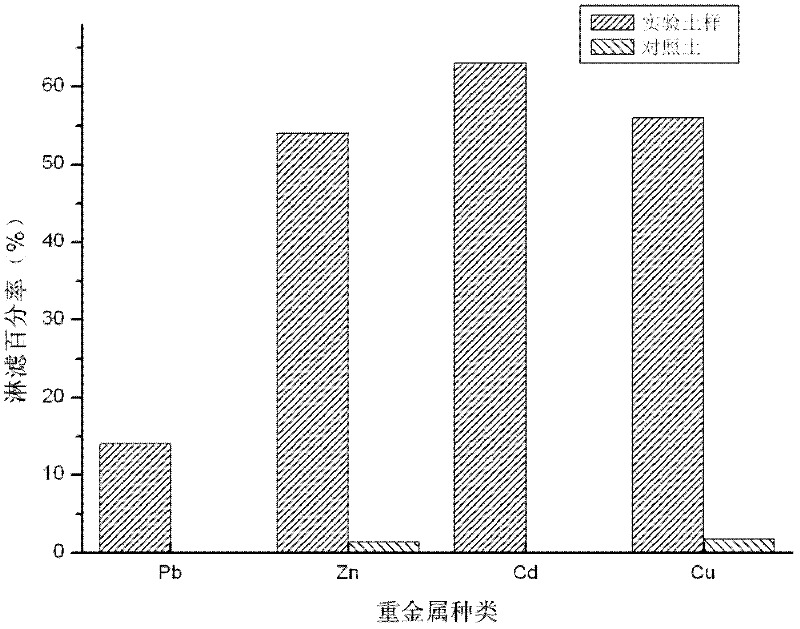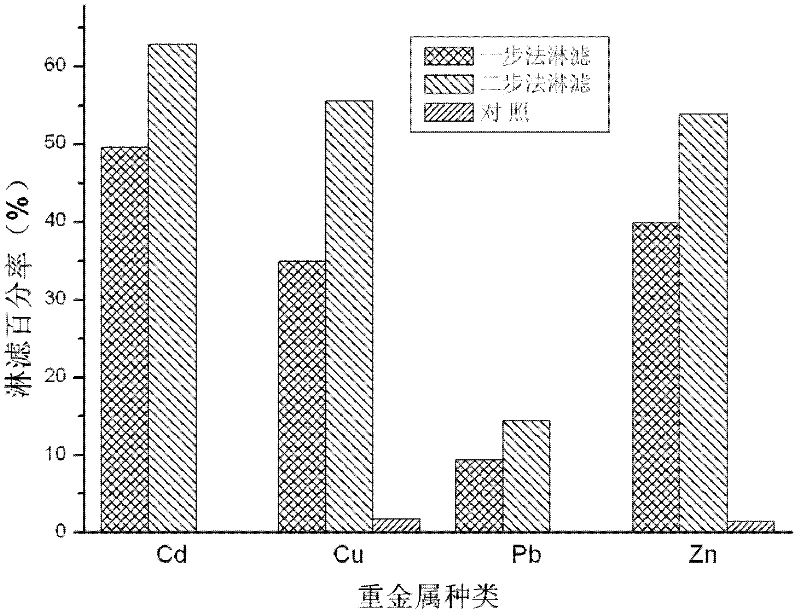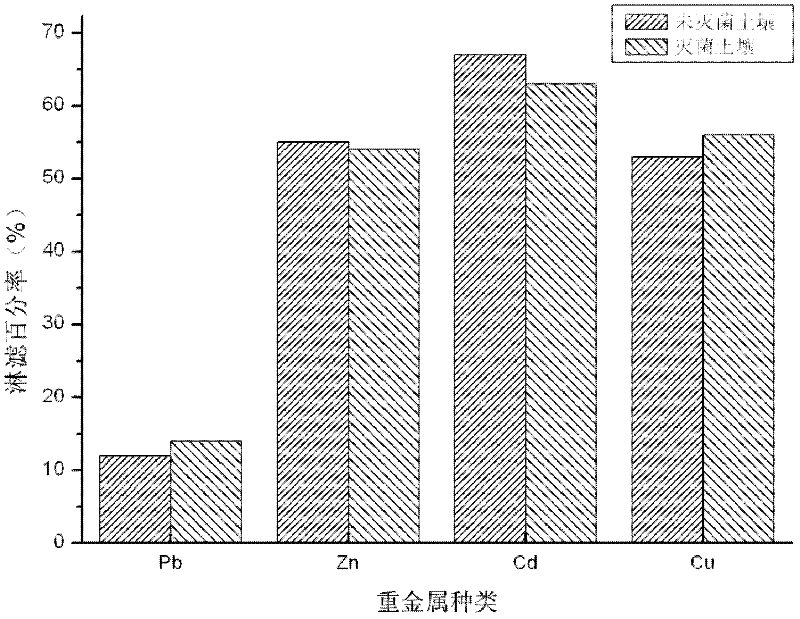Biological leaching restoring method for heavy metal polluted soil
A technology for polluted soil and biological leaching, applied in the field of environmental engineering, can solve problems such as secondary pollution, and achieve the effects of improving fertility, remediation efficiency, and improving soil physical and chemical properties.
- Summary
- Abstract
- Description
- Claims
- Application Information
AI Technical Summary
Problems solved by technology
Method used
Image
Examples
Embodiment 1
[0029] Example 1: Bioleaching restoration of compound polluted soil in a smelting waste dump of a smelter in Zhuzhou, Hunan
[0030] Pick the Penicillium chrysogenum F1 bacterium colony respectively, in Cha's solid medium (sucrose 30g, K 2 HPO 4 1g, NaNO 3 3g, MgSO 4 0.5g, KCl 0.5g, FeSO 4 0.01g, 20g agar, add H 2 0 to 1L; use 0.1mol L-1 HCl to adjust the pH value of the medium to 6.7) and cultivate to obtain the strain spores for inoculation. After 7 days, use a sterile pipette to draw sterile water to rinse the surface of Penicillium chrysogenum F1 colonies to prepare Penicillium chrysogenum F1 10 7 order of magnitude spore fluid.
[0031] The collected soil under the smelting waste pile in a smelter plant in Zhuzhou, Hunan was air-dried, ground, passed through a 2mm aperture sieve, and sterilized in a 150°C sterilizing pot for 30 minutes. Weigh glucose 90g, K 2 HPO 4 1g, NaNO 3 3g, MgSO 4 0.5g, KCl 0.5g, FeSO 4 0.01g dissolved in 1L H 2 O, use 0.1mol L ...
Embodiment 2
[0033] Example 2 Comparison of effects of remediating heavy metal complex pollution using different leaching methods Penicillium Chrysogenum F1
[0034]Take 49mL of modified Cha's liquid medium and put it into a 250mL Erlenmeyer flask for sterilization, and inoculate about 10 7 Add 2.5g of sterilized soil to 1mL of spore liquid. Place in a constant temperature shaking incubator (25°C, 120r / min) and shake for 15 days. The experiment was divided into 3 groups. The first group was a one-step method, that is, soil was added while inoculating the spore liquid. The second group was a two-step method, that is, the bacteria were cultured for 7 days before adding soil. The third group was the control, and only soil was added. , not inoculated with spore fluid. Each experiment was repeated three times. Take out and filter after 15 days, and the filtrate is used to measure the concentration of heavy metals, which is the concentration after leaching, and the measurement of the concentr...
Embodiment 3
[0035] Example 3 Penicillium Chrysogenum F1 remediation of unsterilized heavy metal compound polluted soil
[0036] Take 49mL of modified Cha's liquid medium and put it into a 250mL Erlenmeyer flask for sterilization, and inoculate about 10 7 Add 2.5g of unsterilized soil to 1mL of spore liquid of order of magnitude. Place in a constant temperature shaking incubator (25°C, 120r / min) and shake for 15 days. The experiment was divided into two groups. The first group cultured the bacteria for 7 days before adding non-sterilized soil. The second group was the control group. The bacteria were cultured for 7 days before adding sterilized soil. Each experiment was repeated three times. Take out and filter after 15 days, and the filtrate is used to measure the concentration of heavy metals, which is the concentration after leaching, and the measurement of the concentration of heavy metals is measured by ICP-AES. After testing, the removal rate of each heavy metal in the first group...
PUM
 Login to View More
Login to View More Abstract
Description
Claims
Application Information
 Login to View More
Login to View More - R&D
- Intellectual Property
- Life Sciences
- Materials
- Tech Scout
- Unparalleled Data Quality
- Higher Quality Content
- 60% Fewer Hallucinations
Browse by: Latest US Patents, China's latest patents, Technical Efficacy Thesaurus, Application Domain, Technology Topic, Popular Technical Reports.
© 2025 PatSnap. All rights reserved.Legal|Privacy policy|Modern Slavery Act Transparency Statement|Sitemap|About US| Contact US: help@patsnap.com



